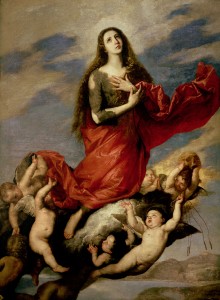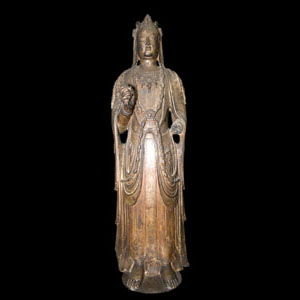Two Landmark Exhibits at Southern Methodist University’s Meadows Museum
 If you’re not familiar with the history of the Meadows Museum at SMU, here’s a quick primer. Algur Meadows, the museum’s namesake, was a Dallasite and wealthy oilman who spent time in Spain on business in the 1950’s. An avid art-lover, his free time was consumed falling in love with Spanish art and over the year’s he amassed what has become known as one of the largest collections of Spanish art outside of Spain.
That’s a pretty cool bragging right for Dallas and affirmation that Meadows succeeded in his dream of creating “a Prado on the prairie.†Upon his death Mr. Meadows bequeathed his collection to Southern Methodist University where there is now a beautiful museum dedicated to Meadows’ collection.
The history makes the current exhibit at the museum that much more exciting. Last year the Meadows Museum began a three year partnership with the Prado itself. The partnership has many components, but the one most Dallasites will be able to enjoy is the aspect of the program which entails the loan of a Prado masterpiece be on display at the Meadows each September for several months.

Ribera's Assumption of the Magdalene, Real Academia de Bellas Artes de San Fernando, Madrid / The Bridgeman Art Library International
Last year Dallas had the opportunity to see El Greco’s Pentecost and currently museum-goers have the chance to see Juspe de Ribera’s The Magdalene. The painting is beautifully displayed in a room with other Ribera Magdalenes on loan from various institutions, as well as paintings from the Meadow’s permanent collection. The opportunity to see the painting is rare, unless you’re planning a trip to Madrid, so take advantage! The painting and exhibit will be in Dallas until January 15.
The Meadows Museum is also currently home to one of the most innovative exhibits I’ve seen in Dallas in a while. Echoes of the Past: The Buddhist Cave Temples of Xiangtangshan is the culmination of years of research and attempts to reconstruct Xiangtangshan, a series of sixth-century Buddhist cave temples hollowed out from the living rock in a mountainous region in northeast China.
The exhibit’s highlight is the painstaking reconstruction of one of the cave temples from this mountain city so visitors have the opportunity to literally experience the cave. The exhibit is a unique mix of architecture, art and technology and makes for a remarkable interactive experience. You can see the exhibit at Meadows from now until January 8.
For more information, admission prices and hours visit www.smu.edu/meadowsmuseum. And get out there!








